Montenegro is a small country located on the eastern coast of the Adriatic Sea. It is known for its stunning natural beauty, with its soaring mountains, pristine beaches, and crystal-clear waters.
But it is not just the landscapes that make this country extraordinary. Montenegro is also home to an incredibly diverse range of birdlife, thanks to its varied habitats, including coastal wetlands, forests, and mountains.
These habitats provide a sanctuary for rare and endangered bird species, making Montenegro a haven for birdwatchers and nature enthusiasts from all around the world.
In this article, we will explore the fascinating world of Montenegro birds and their importance in maintaining the country’s rich biodiversity.
1. Phasianidae
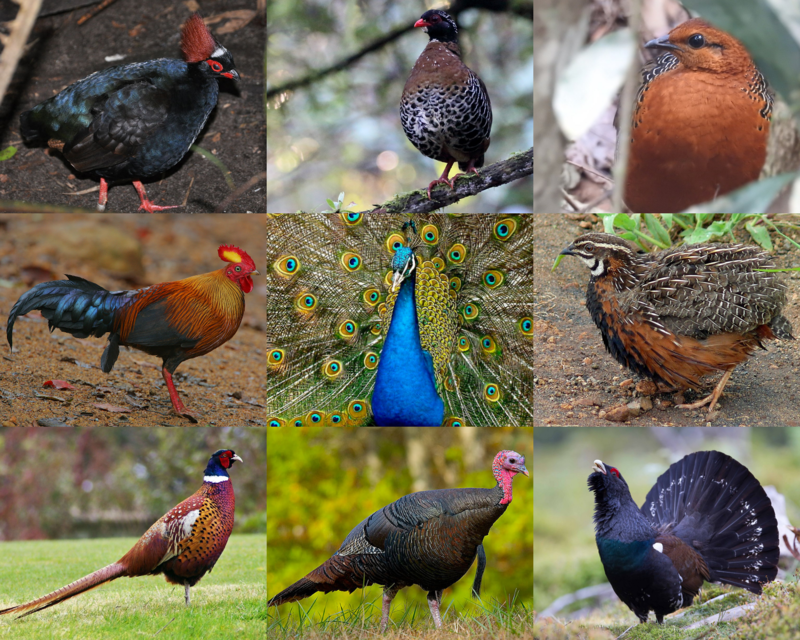
The Phasianidae family of birds is one that contains many popular gamebirds, with a total of 185 species divided across 54 genera.
These heavy ground-living birds include pheasants, partridges, junglefowl, chickens, and turkeys among others like Old World quail and peafowl.
This large family was formerly split into two subfamilies known as the Phasianinae and Perdicinae but this classification has since been changed to reflect more current scientific findings on them.
All these different types of birds have certain things in common such as their strong legs for scratching through leaves or soil looking for food items including insects, seeds, and other vegetation which makes up most of their diet.
They also all tend to be quite colorful in order to attract mates during breeding season when males will often display vibrant feathers or do dances around females in an attempt at courtship ritual displays.
The majority are monogamous creatures too although some may form short-term pair bonds before going off alone again once mating has taken place – either way.
There tends to be very little parental care given by adults after eggs have hatched so chicks need to fend for themselves right away.Scientific classification:
| Kingdom | Animalia |
| Phylum | Chordata |
| Class | Aves |
| Order | Galliformes |
| Superfamily | Phasianoidea |
| Family | Phasianidae Horsfield, 1821 |
Also Featured In: Most Common Birds in China, Common Uzbekistan Birds
2. Gulls
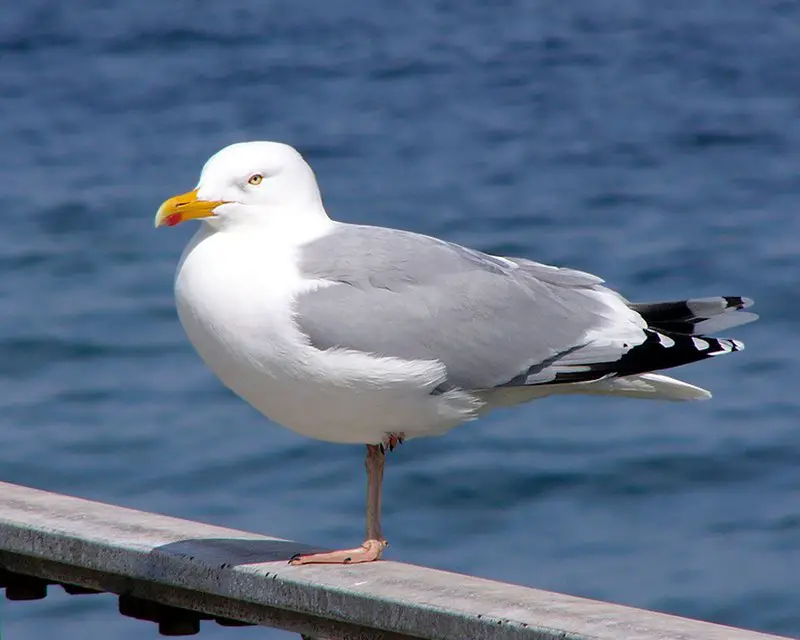
Gulls are a type of seabird in the family Laridae found worldwide. They are highly adaptable, often seen soaring above shorelines or near bodies of water.
Gulls have strong wings and long bills and vary greatly in size, colouration and behaviour from one species to another.
Some gull species feed on fish while others scavenge for food such as insects, small mammals or discarded human refuse.
Despite their different dietary habits they all share common traits including webbed feet which enable them to swim gracefully through the water after prey items like crabs or molluscs.
Gulls generally nest close to the shoreline where there is an abundance of available food sources making them excellent hunters that can live comfortably both on land and at sea.Scientific classification:
| Kingdom | Animalia |
| Phylum | Chordata |
| Class | Aves |
| Order | Charadriiformes |
| Suborder | Lari |
| Family | Laridae Rafinesque, 1815 |
Also Featured In: Birds of Sweden, Birds You’ll Find in Moldova
3. Plovers

Plovers are a family of around 64-68 species of ground-dwelling birds, commonly found in open country such as fields, meadows and tundras.
They have short bills with webbed feet to help them forage through mud or shallow water.
Plover plumage is usually mottled brown though some species may have brighter colors on the head and wings.
These birds feed mainly on insects but can also eat small crustaceans and worms.
Plovers breed during springtime when they dig holes in sandy or pebbled beaches to lay their eggs which hatch after about 3 weeks incubation period.
They use distraction display behaviour by pretending an injury to the predators away from their nests if needed for protecting their young ones.Scientific classification:
| Kingdom | Animalia |
| Phylum | Chordata |
| Class | Aves |
| Order | Charadriiformes |
| Family | Charadriidae Leach, 1820 |
Also Featured In: Syrian Birds You Need to Know, Belarus Birds You Should Know
4. Stilts And Avocets
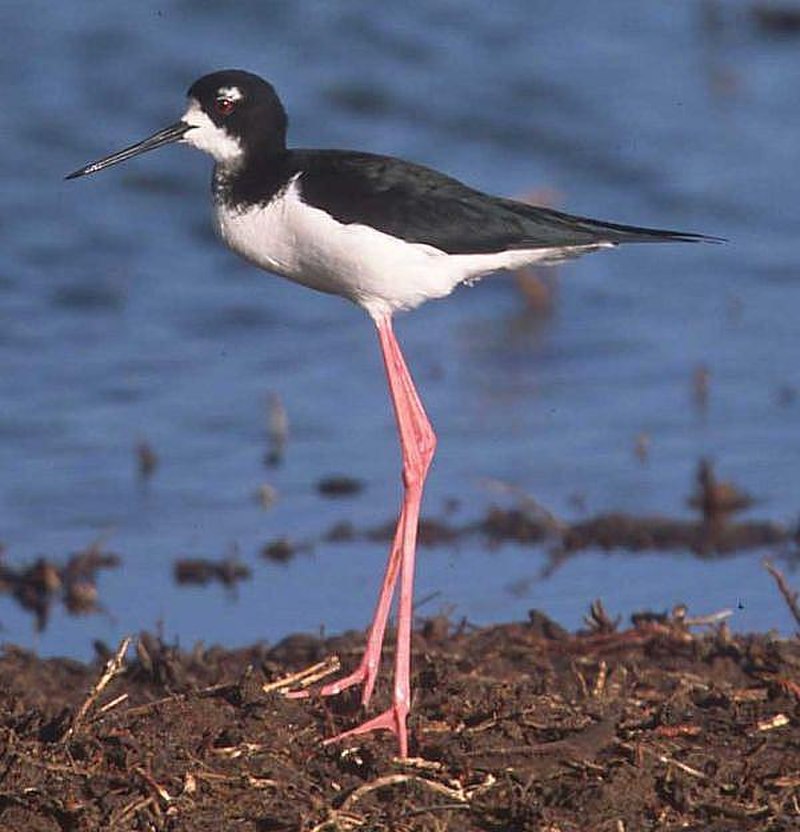
Stilts and avocets are two distinct groups of birds belonging to the family Recurvirostridae. They range in length from 30-46 cm (12-18 inches) and weigh between 140 – 435 g (4.9 – 15.3 ounces).
Males usually have slightly larger bodies than females, with long thin legs, necks and bills.
Avocet bills curve upwards uniquely while stilt beaks remain straight most times.
These wading birds live mainly near shorelines or wetlands where they feed on aquatic invertebrates like brine shrimp, insects etc., occasionally supplementing their diet with seeds or small fish too.
Stilts also inhabit open fields in search of food sources such as earthworms or grasshoppers during the non-breeding season.
Both groups migrate over large distances for warmer weathers when it gets cold outside.Scientific classification:
| Kingdom | Animalia |
| Phylum | Chordata |
| Class | Aves |
| Order | Charadriiformes |
| Suborder | Charadrii |
| Family | Recurvirostridae Bonaparte, 1854 |
Also Featured In: Native Birds of Kazakhstan, Bulgarian Birds
5. Glareolidae
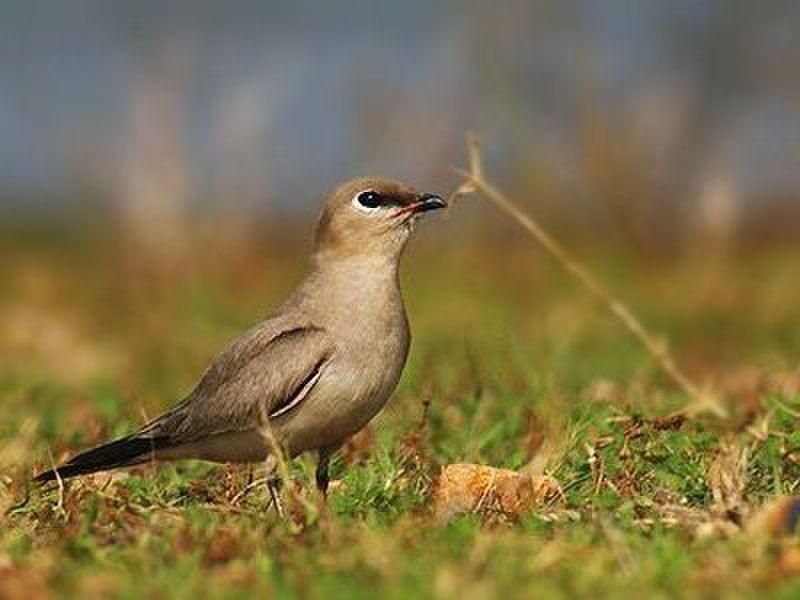
Glareolidae is a family of wading birds, consisting of four genera and 17 species. They are distinguished from other charadrii by their long bills which have a slight downward curve.
Glareolidae live around open grasslands and deserts, where they hunt for insects using the bill to probe into soil or vegetation.
Most species are found in Africa but two pratincoles inhabit parts of Europe and Asia as well.
Coursers tend to be larger than pratincoles with longer legs allowing them to run quickly across sandy dunes while feeding on small animals like lizards or spiders.
Pratincoles feed mainly on flying insects, snatching them out of midair with great agility during flight.
All glareolids share unique features such as large eyes that help it spot prey at night easily making this group one interesting bird family.Scientific classification:
| Kingdom | Animalia |
| Phylum | Chordata |
| Class | Aves |
| Order | Charadriiformes |
| Suborder | Lari |
| Family | Glareolidae CL Brehm, 1831 |
Also Featured In: Lebanon Birds Live in Semi-Desert Areas, Common Denmark Birds
6. Bustard
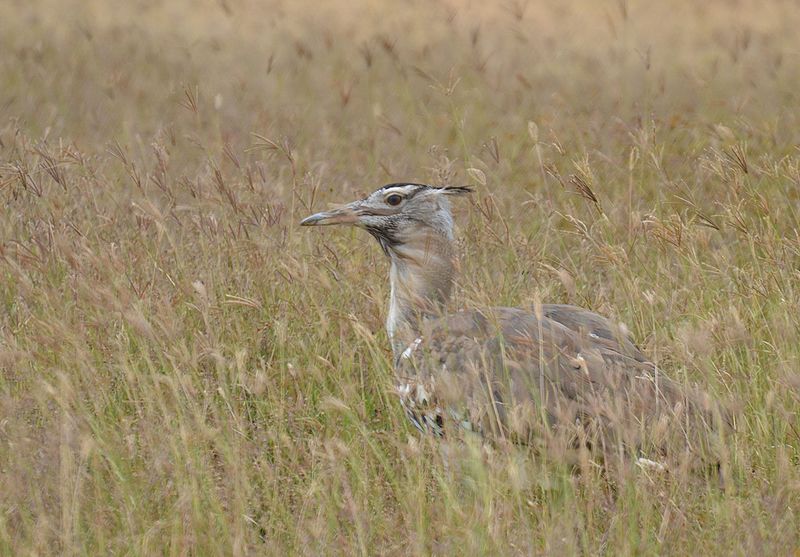
Bustards are large, terrestrial birds that inhabit dry grassland areas and the steppes of the Old World. They range from 40-150 cm in length and belong to the family Otididae.
Bustards have an omnivorous diet consisting of leaves, buds, seeds, fruit as well as small vertebrates and invertebrates.
These birds usually live a solitary life but can be seen gathering around water sources or food during certain times of year such as mating season.
Due to their large size they are vulnerable to predation by foxes or other animals which is why they tend to remain alert at all times.
When in open spaces while relying on camouflage for protection against predators when out in tall vegetation coverings.Scientific classification:
| Kingdom | Animalia |
| Phylum | Chordata |
| Class | Aves |
| Clade | Otidimorphae |
| Order | Otidiformes Wagler, 1830 |
| Family | Otididae Rafinesque, 1815 |
Also Featured In: Common Birds in India, Birds That Live in Iraq
7. Thrush
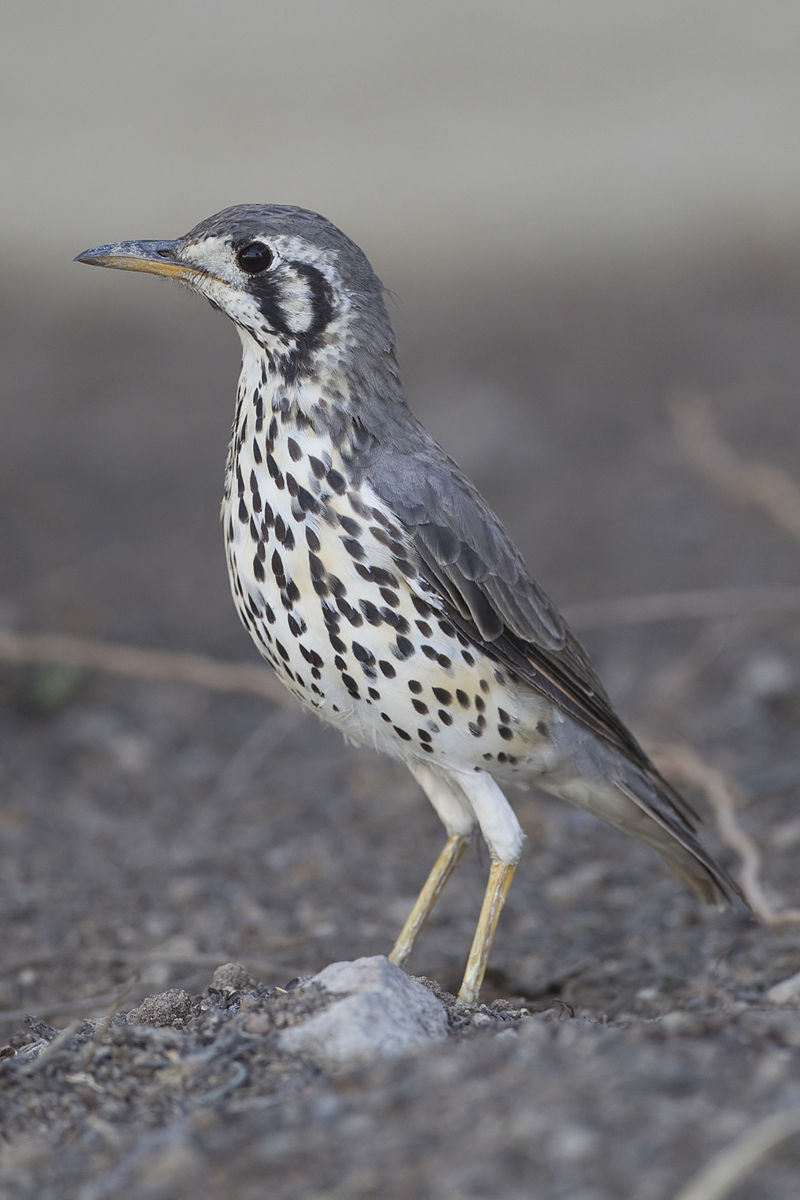
Thrushes are small to medium-sized birds belonging to the Turdidae family, and found all over the world. They live on or near the ground and feed on insects, other invertebrates and fruit.
Their feathers range from greyish browns to deep blues in colour with spotted wings that help them blend into their natural habitats such as forests, woodlands and shrubs.
Thrushes have distinctive songs which they sing during spring mating season; many species also perform complex flight displays for courtship rituals.
These birds may be solitary creatures but can often be seen foraging together in groups or pairs when searching for food sources like worms, snails or berries.
A healthy thrush population is an indication of a balanced environment since they require clean water sources as well as plenty of vegetation cover – making them important indicators of ecosystem health worldwide.Scientific classification:
| Kingdom | Animalia |
| Phylum | Chordata |
| Class | Aves |
| Order | Passeriformes |
| Suborder | Passeri |
| Family | Turdidae Rafinesque, 1815 |
Also Featured In: Most Common Songs Birds that Live around You, Birds that Live in Croatia
8. Northern Storm Petrels
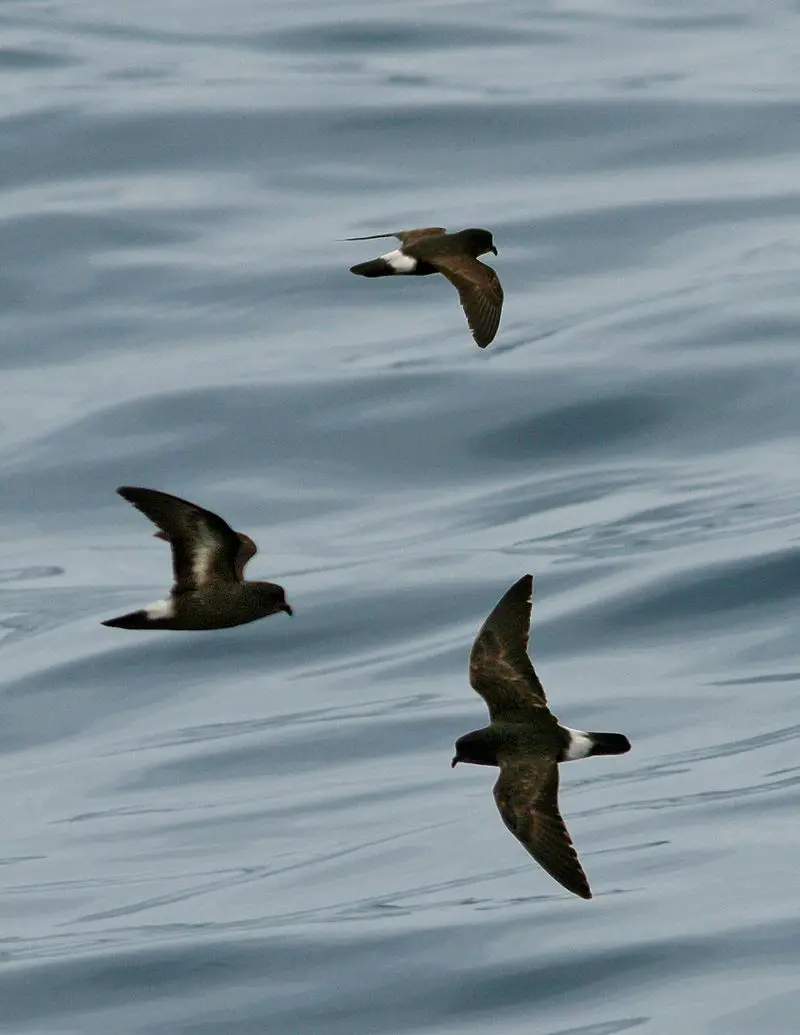
Northern storm petrels are one of the smallest seabirds, inhabiting oceans all over the world.
They have a unique ability to hover over water and pick planktonic crustaceans and small fish from the surface.
Northern storm petrels belong to the genus Hydrobates in family Hydrobatidae, part of Procellariiformes order.
This species was once lumped with austral storm petrel but recent studies show that they weren’t related closely which led them being split into two distinct species now.
These birds can be identified by their dark grey upperparts and wings along with white underparts when seen from afar while feeding on ocean’s surface.Scientific classification:
| Kingdom | Animalia |
| Phylum | Chordata |
| Class | Aves |
| Order | Procellariiformes |
| Family | Hydrobatidae Mathews, 1912 |
| Genus | Hydrobates F. Boie, 1822 |
Also Featured In: Beautiful Brazilian Birds, Most Common Lithuanian Birds
9. Stone-Curlew

Stone-curlews, also known as dikkops or thick-knees, are a family of birds that have adapted to live in tropical and temperate regions throughout the world.
They can be found in Africa, Asia and Australia with two or more species per region. Despite being classified as waders, most prefer dry arid habitats over moist wetlands.
Stone-curlews typically have long legs which help them navigate through their preferred terrain efficiently; some species even stand at an impressive height when standing on those long legs.
Additionally they feature cryptic plumage which helps them blend into their surroundings while hunting for prey such as insects and small mammals like rodents.
These unique bird’s calls are easily recognizable; it has been said that hearing one is similar to listening to someone whistling ‘Keee Weee’.Scientific classification:
| Kingdom | Animalia |
| Phylum | Chordata |
| Class | Aves |
| Order | Charadriiformes |
| Suborder | Chionidi |
| Family | Burhinidae Mathews, 1912 |
Also Featured In: Armenian Birds You Should Know, Birds Commonly Found in Slovenia
10. Bee-Eater
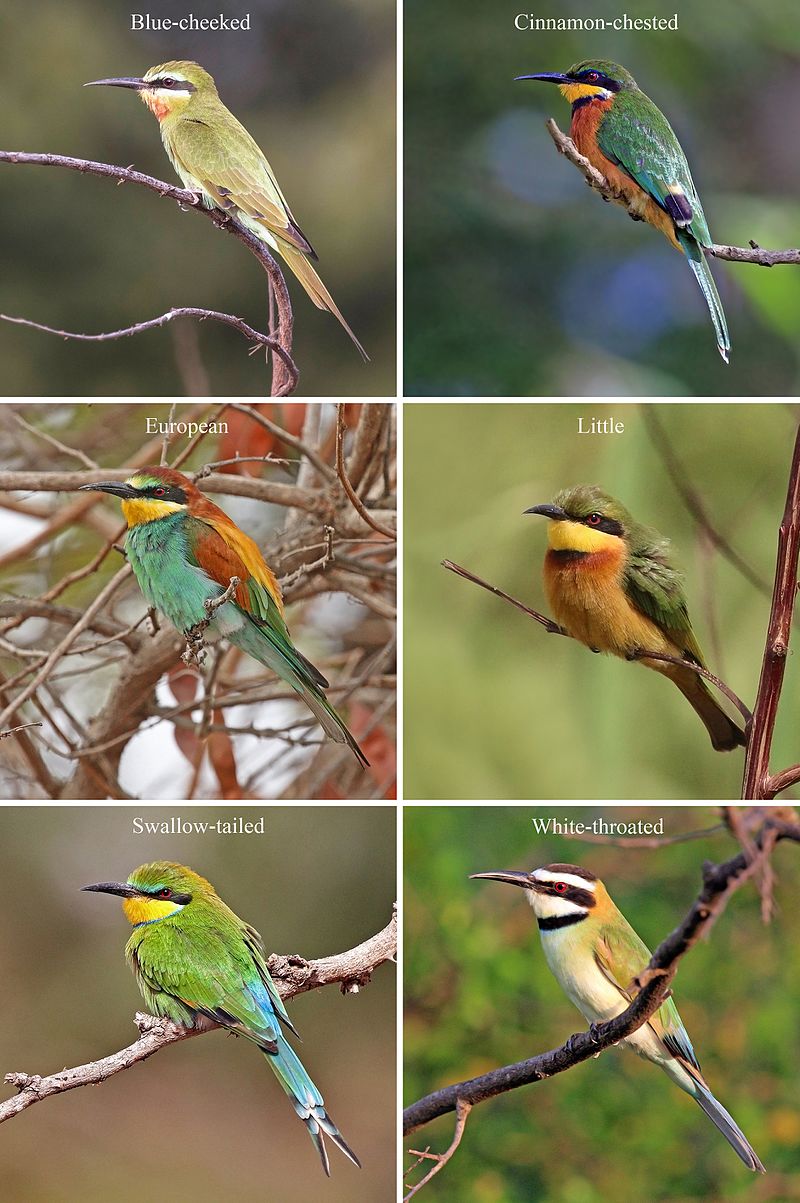
Bee-eaters are one of the most beautiful and vibrant birds in existence. They have a slender body, long wings, down turned bills and their signature elongated central tail feathers which make them instantly recognizable from afar.
Their plumage is incredibly colorful with many shades ranging from blues to greens to reds that glisten when they fly through the air.
These stunning creatures can be found all over Africa, Asia, Southern Europe, Australia and New Guinea where they feed mainly on bees but also other insects like flies or wasps as well as small mammals such as lizards or rodents.
Bee-eaters live in colonies near rivers or wetlands so that they may easily hunt for food while staying close together for safety purposes.
Additionally it allows them to better display their impressive courtship dances during mating season.Scientific classification:
| Kingdom | Animalia |
| Phylum | Chordata |
| Class | Aves |
| Order | Coraciiformes |
| Family | Meropidae Rafinesque, 1815 |
Also Featured In: Common Nigerian Birds, Common Serbian Birds
11. Grebes
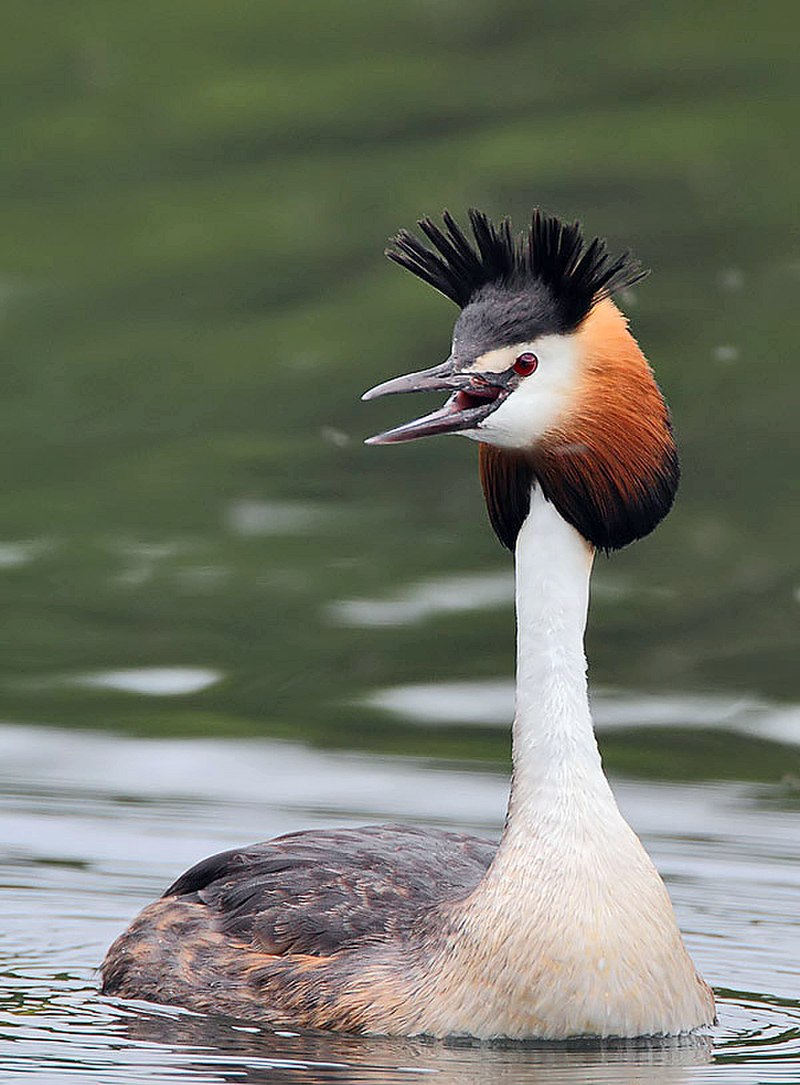
Grebes are a type of diving bird found in freshwater habitats around the world. They belong to the order Podicipediformes and have 22 species that exist across six genera.
Some species can also be found in marine environments during their migration or winter season, and some even live flightless lives on stable lakes.
Grebes vary greatly between regions; for example, they range from 4-32 inches long with anywhere from 8-30 ounces of weight depending on which species it is.
Their plumage may be black, browns/grays or whites but usually consist of bright colors such as yellows, blues and greens while underwater they use these feathers to help them streamline through the water quickly.Scientific classification:
| Kingdom | Animalia |
| Phylum | Chordata |
| Class | Aves |
| Clade | Neoaves |
| Clade | Mirandornithes |
| Order | Podicipediformes Fürbringer, 1888 |
| Family | Podicipedidae Bonaparte, 1831 |
Also Featured In: Common Birds in Japan, Water Birds Live around Us
12. Old World Flycatchers
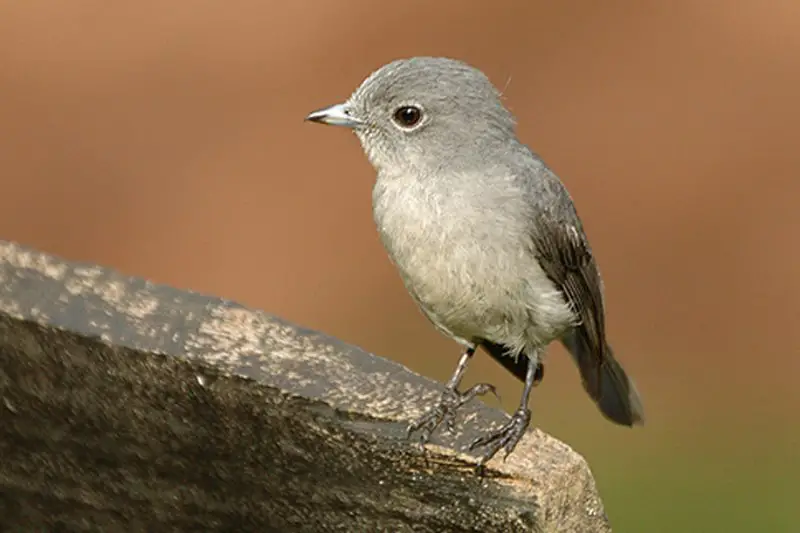
The Old World Flycatcher is a family of small passerine birds, native to Europe, Africa and Asia. They are mainly insectivorous arboreal birds that feed on insects they catch in the air or trees.
Their wingspan ranges from 5-11 inches long with males usually being slightly larger than females.
The coloration of these birds can range greatly depending on species but typically have dull greyish brown upperparts and pale undersides which help them blend into their environment for hunting purposes.
Bluethroat (Luscinia svecica) and Northern Wheatear (Oenanthe oenanthe) are two exceptions as they can be found in North America too.
These charming little creatures make fun additions to birdwatching lists all over the world because of their vibrant colors and interesting behaviors.Scientific classification:
| Kingdom | Animalia |
| Phylum | Chordata |
| Class | Aves |
| Order | Passeriformes |
| Superfamily | Muscicapoidea |
| Family | Muscicapidae Fleming J., 1822 |
Also Featured In: Birds of Latvia, Hong Kong Birds You Need to See
13. Shrike
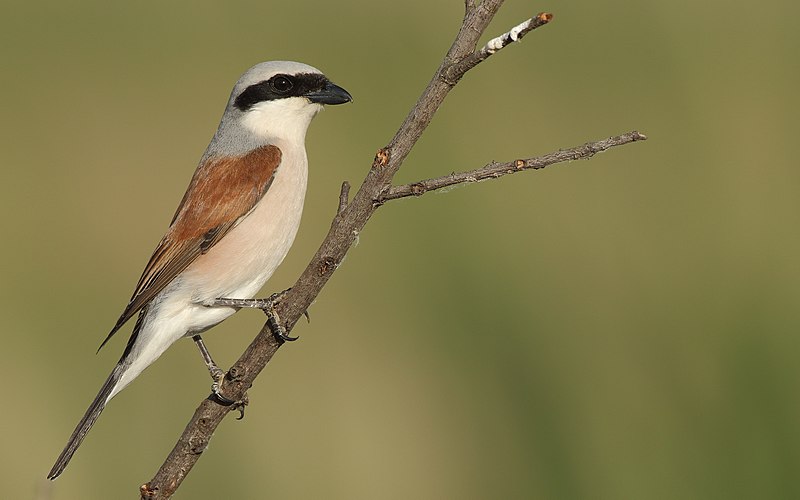
Shrikes are small passerine birds of the family Laniidae, with 34 species in four genera. They get their name from Old English word “scrīc”, which refers to their shriek-like call.
These birds have earned the nickname ‘butcherbirds’ due to their feeding habits; they impale prey on thorns or barbed wire fences for later consumption.
Shrikes also tend to be aggressive predators and hunt a wide range of animals such as insects, small reptiles, rodents and even other smaller bird species.
In terms of physical appearance, these songbirds can vary greatly depending on the specific genus but usually boast a large hooked bill atop an impressive crest along with bright colors like gray, black or brownish hues across its feathers.
It’s clear shrike is quite remarkable creature that has gained notoriety for both hunting prowess and distinctive vocalizations.Scientific classification:
| Kingdom | Animalia |
| Phylum | Chordata |
| Class | Aves |
| Order | Passeriformes |
| Superfamily | Corvoidea |
| Family | Laniidae Rafinesque, 1815 |
Also Featured In: Egyptian Birds, Most Common Lake Birds
14. Old World Orioles
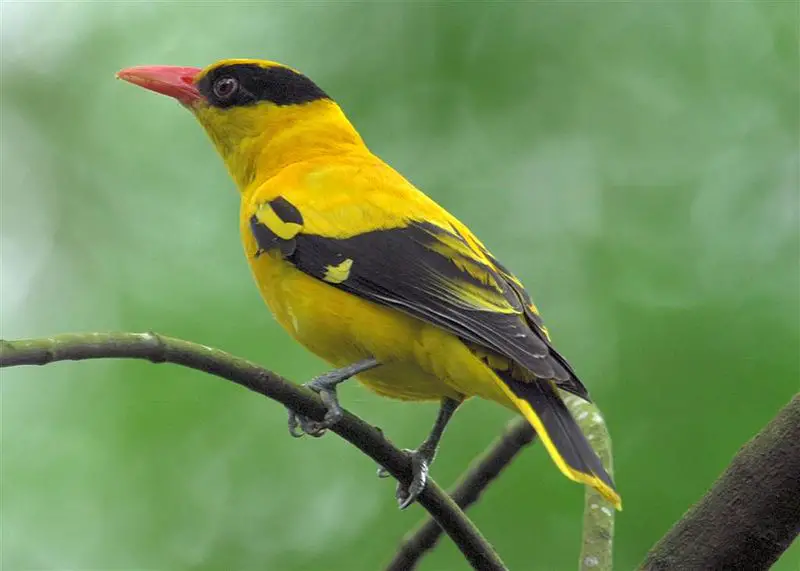
Old World orioles are a family of passerine birds found in the Old World. It comprises four genera: piopios, figbirds, pitohuis and the original genus Oriolus.
The African black-headed species have sometimes been removed from this latter group due to their distinct characteristics as well as other proposed splits for Oriolus.
These colorful birds can be identified by their bright yellow or orange plumage that often features darker markings on wings and head areas, although some species may also display a blue hue or stripes across the body feathers.
They typically feed on insects such as caterpillars and grasshoppers but will supplement with small fruits when available too – making them beneficial additions to gardens.Scientific classification:
| Kingdom | Animalia |
| Phylum | Chordata |
| Class | Aves |
| Order | Passeriformes |
| Superfamily | Orioloidea |
| Family | Oriolidae Vigors, 1825 |
Also Featured In: Common Estonian Birds, Birds that Live in Faroe Islands
15. Eurasian Reed Warbler
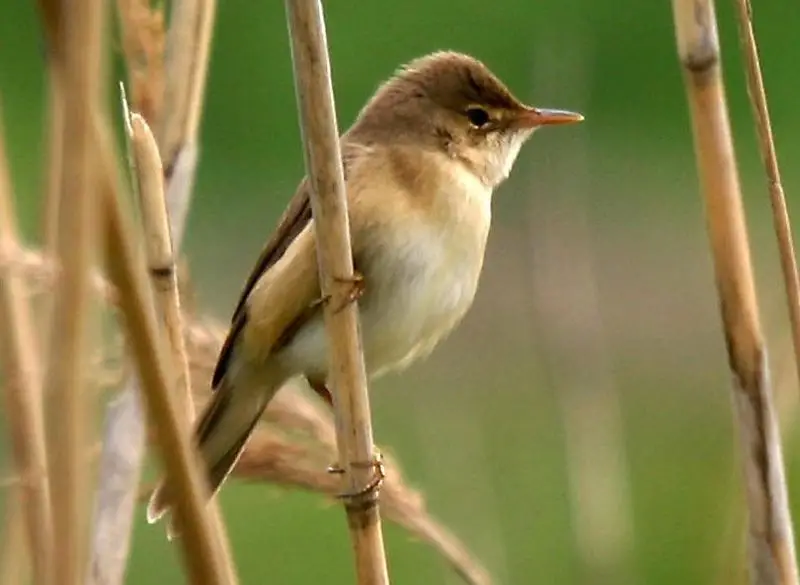
The Eurasian reed warbler (Acrocephalus scirpaceus) is a species of Old World Warbler native to the temperate parts of Europe and Asia.
It breeds in wetlands such as marshes, ponds and rivers with dense vegetation like reeds or tall grasses.
During its wintering season, it migrates southward to sub-Saharan Africa where there are milder conditions.
This small bird has streaked brown plumage on the upperparts and white underparts which makes it difficult for predators to spot among the foliage.
Its diet consists mainly of insects including aphids, caterpillars larvae and moths caught while flying over water or by gleaning from plants growing near water bodies.
The male sings an attractive song consisting of several phrases repeated one after another as part of their courtship display during breeding season in order attract females for mating purposes.Scientific classification:
| Kingdom | Animalia |
| Phylum | Chordata |
| Class | Aves |
| Order | Passeriformes |
| Family | Acrocephalidae |
| Genus | Acrocephalus |
| Species | A. scirpaceus |
Also Featured In: Common Slovakian Birds, Guam Birds You Need to See
16. Common Swift
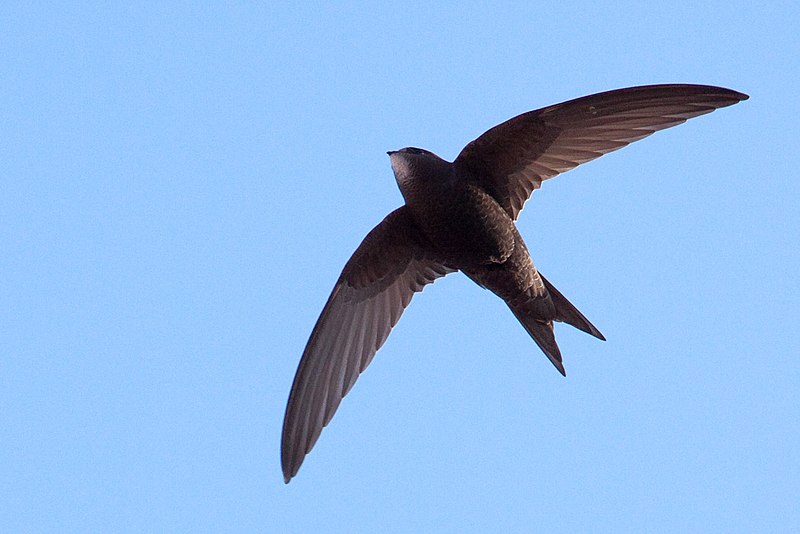
The Common swift is a medium-sized bird with an appearance similar to the barn swallow or house martin.
Its wings are larger, however it is not related to these species but instead belongs in its own order of Apodiformes.
The similarities between the two groups have come about due to convergent evolution and a shared environment.
As for relatives, they can be found among New World hummingbirds and South American swifts; whereas more distant cousins include nightjars as well as treeswifts from Asia/Africa and Australian swiftspecies.
These birds live up high in the air where they remain on constant flight even when sleeping or eating.
They usually migrate south during winter months then return again each springtime bringing life back into our skies.Scientific classification:
| Kingdom | Animalia |
| Phylum | Chordata |
| Class | Aves |
| Order | Apodiformes |
| Family | Apodidae |
| Genus | Apus |
| Species | A. apus |
Also Featured In: Native Birds Of Germany, Common Birds in the Cities
17. Bearded Reedling
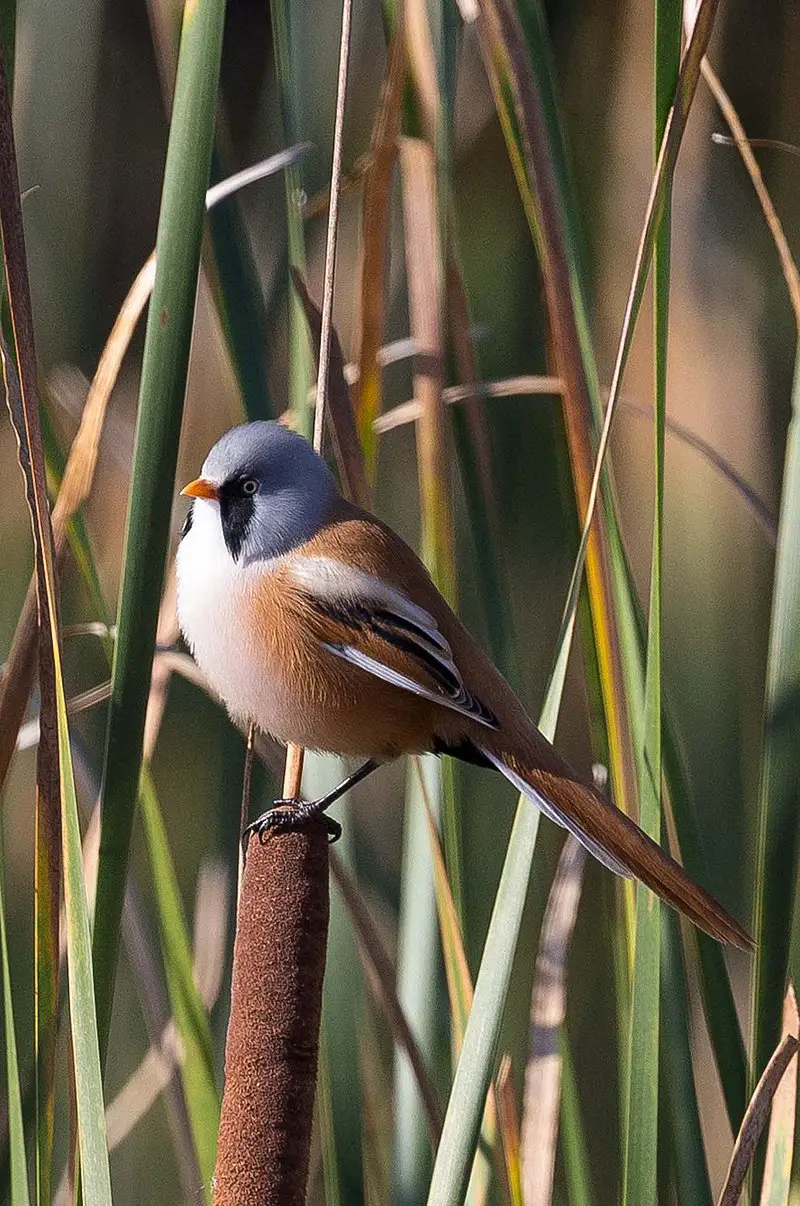
The Bearded Reedling is a small passerine bird found in reed-beds across Europe, Asia and North Africa.
It is easily identified by its distinct black and white plumage with males having yellow faces.
This species belongs to the only family of birds known as Panuridae and was first described by Carl Linnaeus back in 1758.
They feed on insects such as beetles, flies, moths among others but also consume seeds from plants like sedges or rushes during winter months when food availability decreases significantly.
These birds are territorial meaning that they have their own area where they live which can vary from 8 to 12 hectares depending on the seasonality of insect abundance within these areas making them an important part for maintaining healthy ecosystems in wetlands around their range.Scientific classification:
| Kingdom | Animalia |
| Phylum | Chordata |
| Class | Aves |
| Order | Passeriformes |
| Family | Panuridae Des Murs, 1860 |
| Genus | Panurus Koch, 1816 |
| Species | P. biarmicus |
Also Featured In: Birds of United Kingdom, Birds of Norfolk
18. Alpine Chough
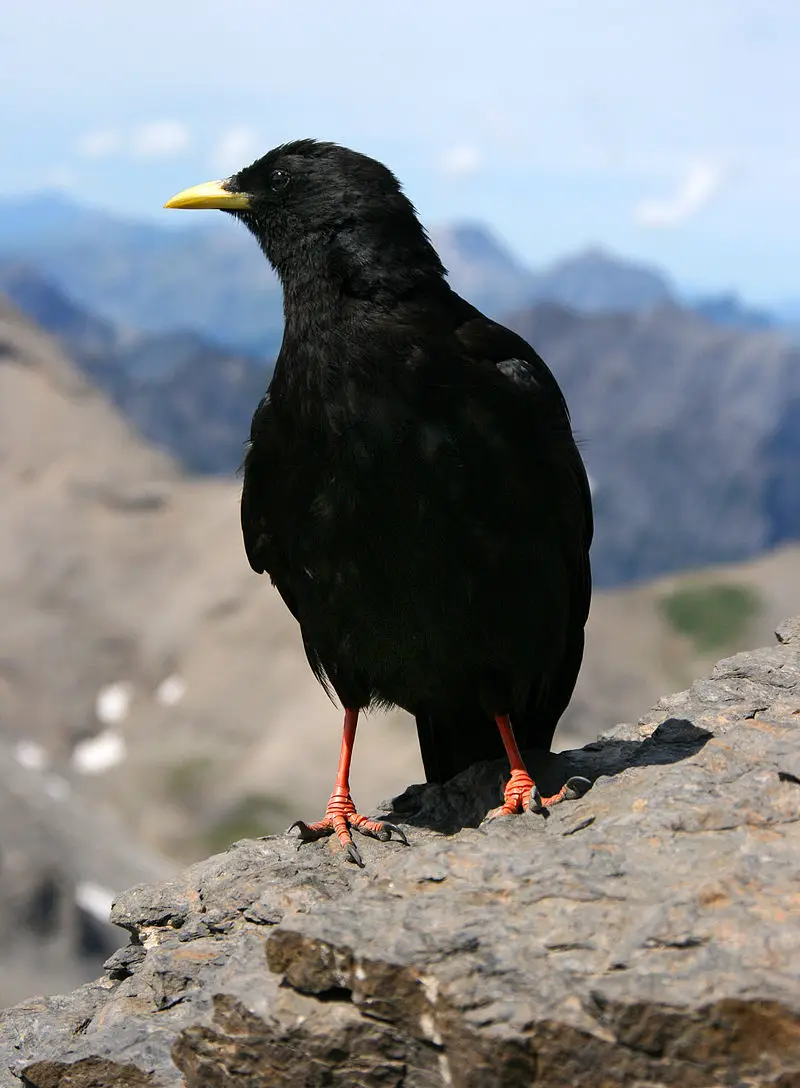
The Alpine chough is a bird in the crow family, distinguished by its yellow beak and black feathers. It has two subspecies that breed in high mountains of Spain, southern Europe and North Africa to Central Asia and Nepal.
This species can nest at incredible altitudes due to special adaptations such as their eggs having extra layers of membranes for protection against thin atmosphere on higher elevations.
The birds feed mainly on insects but have also been known to scavenge carrion or food left out by humans near their nesting sites.
They are agile fliers often seen gliding along cliffs with a characteristic “chack-chack” call which gives them their name.Scientific classification:
| Kingdom | Animalia |
| Phylum | Chordata |
| Class | Aves |
| Order | Passeriformes |
| Family | Corvidae |
| Genus | Pyrrhocorax |
| Species | P. graculus |
Also Featured In: Most common Birds in France, Most Common Birds of Corsica
19. Threskiornithidae
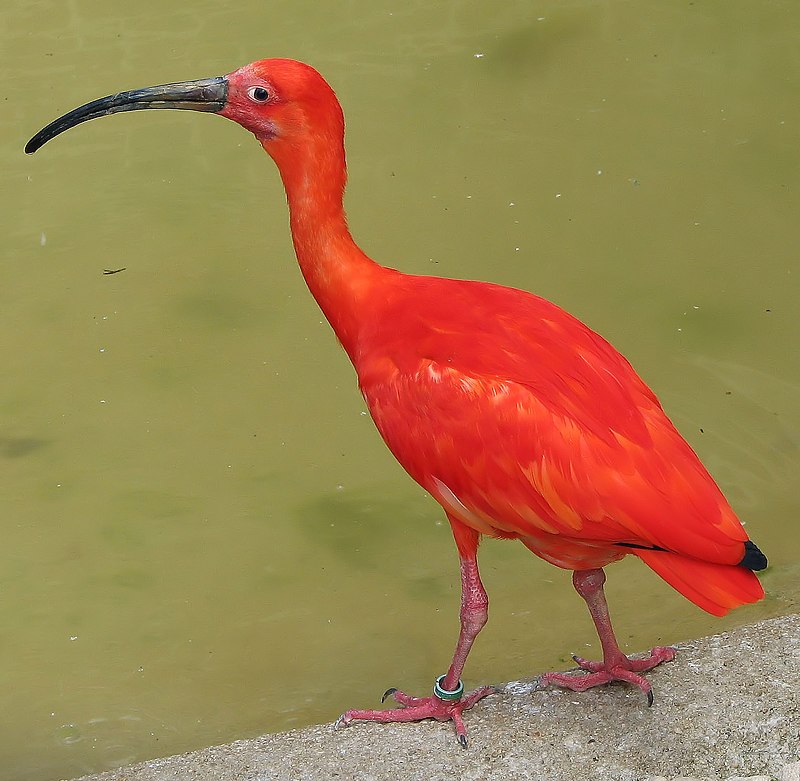
Threskiornithidae is a family of large wading birds which includes 36 species. These birds are traditionally divided into two subfamilies – the ibises and the spoonbills.
However, recent genetic analysis has shown that spoonbills actually belong to Old World ibis group, while New World ibises form an early offshoot from this lineage.
Threskiornithidse members have long curved beaks with serrated edges used for catching fish in shallow water or mudflats, as well as other aquatic invertebrates like crustaceans and mollusks.
They also feed on plant matter such as grains and seeds found close to wetlands areas where they live.
This diverse diet makes them important scavengers in their ecosystems, helping maintain healthy populations of native wildlife by controlling insect numbers and dispersing energy-rich seeds throughout wetland habitats.Scientific classification:
| Kingdom | Animalia |
| Phylum | Chordata |
| Class | Aves |
| Order | Pelecaniformes |
| Suborder | Ardei |
| Family | Threskiornithidae Richmond, 1917 |
Also Featured In: Birds that Live in Greenland, Birds Commonly Found in Northern Ireland
20. Boreal Owl
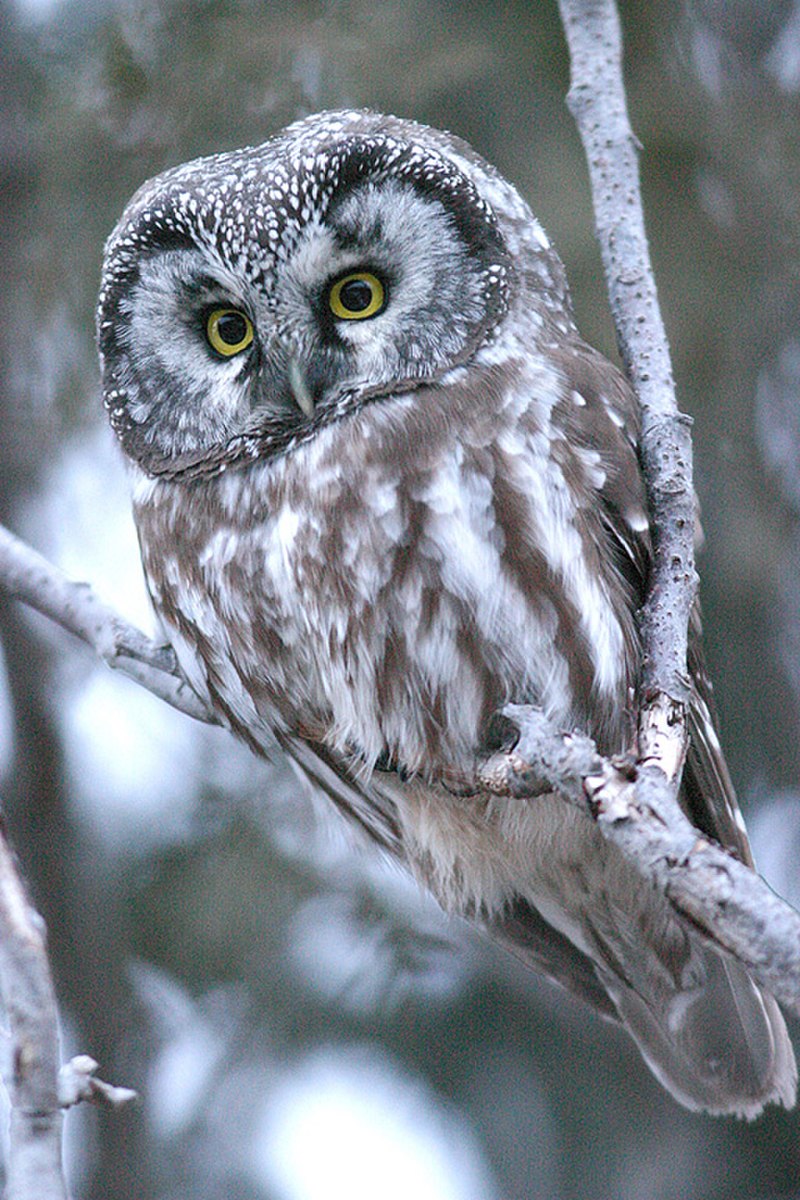
The Boreal Owl is a small, nocturnal bird of the Strigidae family commonly found in North America and Europe.
It’s also known as Tengmalm’s owl after Swedish naturalist Peter Gustaf Tengmalm or Richardson’s owl after Sir John Richardson.
The boreal owl has an elusive nature which makes it difficult to observe due to its shyness towards human activity during daylight hours.
Its feathers are dark brown with white spots on the wings, face and throat while its underbelly is light grey/brown with darker streaks along the sides.
They have long talons used for catching prey such as mice, voles and other small rodents making them effective hunters at night-time when they become more active seeking food sources away from humans.
Their habitat consists of coniferous forests where they can find shelter among large trees that offer nesting sites high up off of ground level keeping them safe from predators like foxes and coyotes who roam around looking for easy meals near the forest floor.Scientific classification:
| Kingdom | Animalia |
| Phylum | Chordata |
| Class | Aves |
| Order | Strigiformes |
| Family | Strigidae |
| Genus | Aegolius |
| Species | A. funereus |
Also Featured In: Birds of Poland, Birds You’ll Find in Night
21. Eurasian Penduline Tit
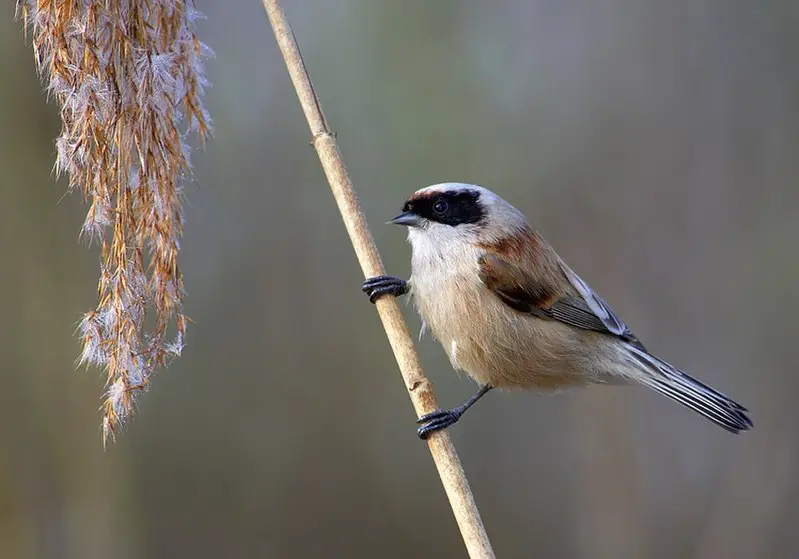
The Eurasian penduline tit is a passerine bird of the genus Remiz which can be found widely across the western Palearctic.
It migrates to more northern parts in summer, while staying resident in its southern range during winter months.
This species experienced an expansion of its breeding grounds throughout Western Europe between 1980s and 1990s, thus increasing its population significantly.
The Penduline Tit has various striking features like bright yellow underparts with black streaks on sides.
Greyish-brown upper part with white underside and pale eye line along head sides as well as distinctive tail nest made from fibers and mosses hanging from trees or shrubs like a pendulum hence their name ‘Penduline’.
These birds feed mainly on insects but also eat some seeds especially sunflower seeds making them popular garden visitors for many people.Scientific classification:
| Kingdom | Animalia |
| Phylum | Chordata |
| Class | Aves |
| Order | Passeriformes |
| Family | Remizidae |
| Genus | Remiz |
| Species | R. pendulinus |
Also Featured In: Birds of Morocco,
22. Skuas
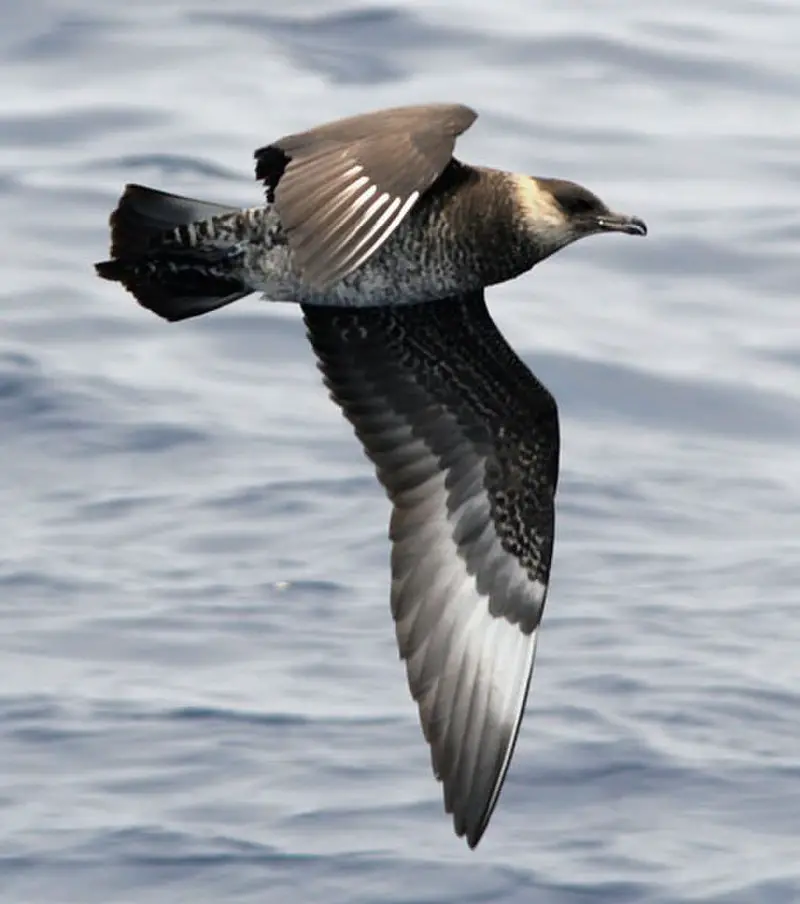
Skuas are a group of predatory seabirds with seven species, all belonging to the genus Stercorarius.
They are also known as “Jaegers” in North America and their name originates from the Faroese word for Great Skua – skúgvur.
These birds typically inhabit coastal areas or open oceans where they feed on fish, krill and other marine creatures.
Skuas can be distinguished by their pointed wings which help them fly long distances while hunting food.
Their distinctive colouration varies depending on age and habitat but generally includes greyish brown upperparts and white underparts with black streaks along its belly area.
The overall size ranges from 24-40 cm making these one of the larger sea bird species.Scientific classification:
| Kingdom | Animalia |
| Phylum | Chordata |
| Class | Aves |
| Order | Charadriiformes |
| Suborder | Lari |
| Family | Stercorariidae Gray, 1871 |
| Genus | Stercorarius Brisson, 1760 |
Also Featured In: Birds that Live in the Ocean , Birds that Live in Tamil Nadu
23. Sylviid Warblers
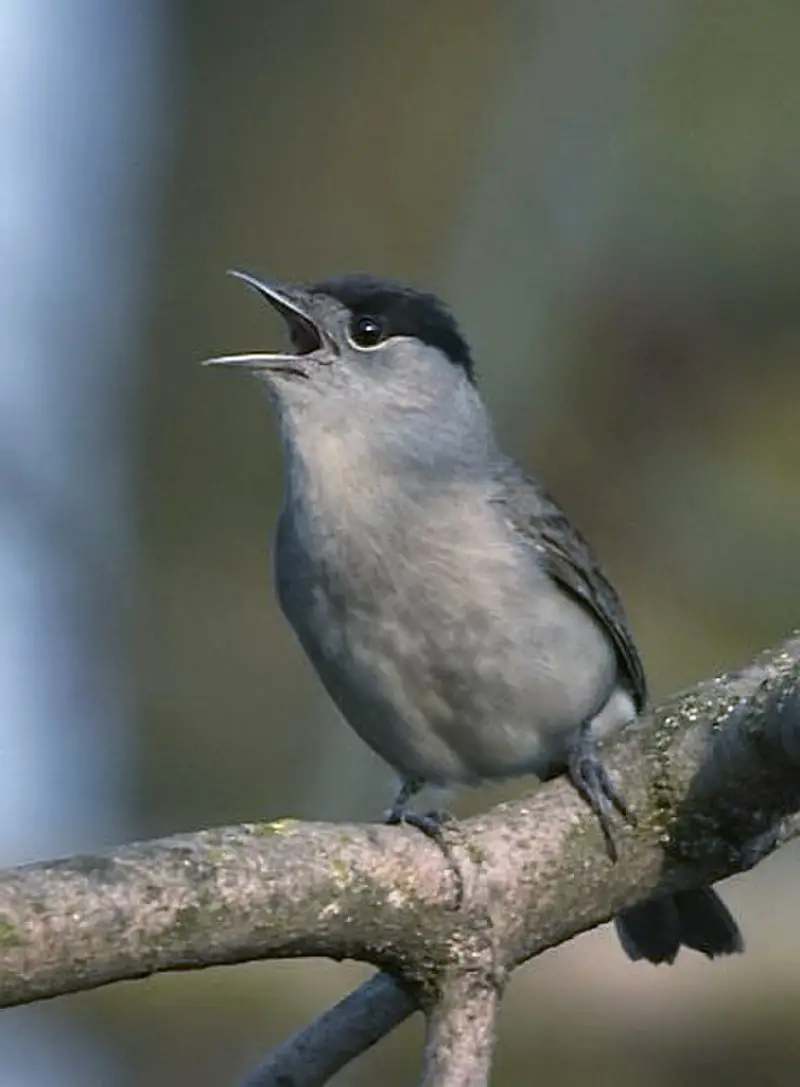
The Sylviid warblers are a family of passerine birds found in Eurasia and Africa. They include the typical warblers as well as babblers that were formerly part of the Old World babbler family.
These birds have slender bodies, pointed wings, long tails and strong legs adapted for ground-dwelling habits like running or hopping along branches.
The male often has bright colors while females are usually duller in coloration with more muted plumage patterns than males.
Some species also show sexual dimorphism where one sex may be larger or smaller than its counterpart; for instance some species may have longer tail feathers on the female side compared to their male counterparts.
Many members of this group feed on insects but some specialize on seeds, fruits, nectar or even frogs.Scientific classification:
| Kingdom | Animalia |
| Phylum | Chordata |
| Class | Aves |
| Order | Passeriformes |
| Superfamily | Sylvioidea |
| Family | Sylviidae Leach, 1820 |
Also Featured In: Common United Arab Emirates Small Birds, Yellow Birds that Live in Oregon
24. Long-Tailed Tits
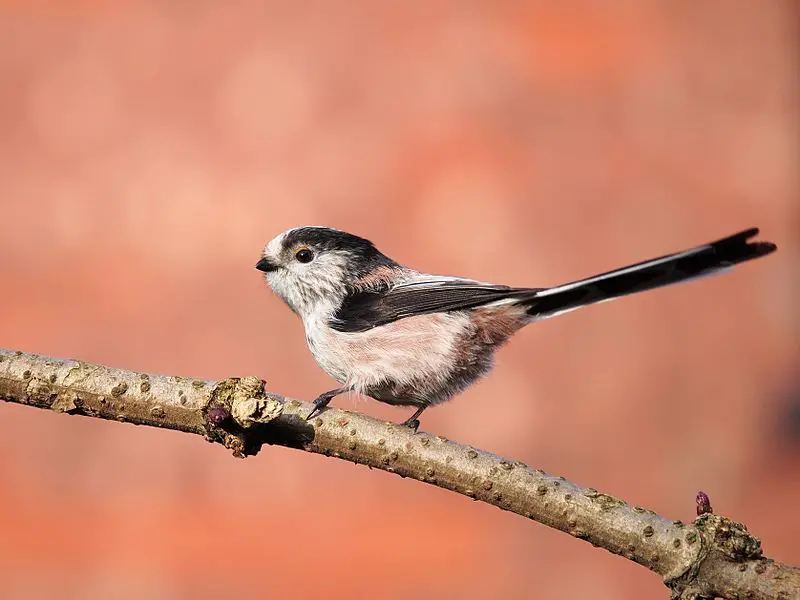
Long-tailed tits are a small passerine bird family with long tails compared to their size. They have 13 species in 3 genera, and they mostly live in Eurasia.
These birds love to stay active by foraging for insects among shrubs and trees throughout the day.
During non-breeding season, these birds can be found living together in large flocks of up to 50 individuals.
These playful little creatures make wonderful companions due to their social nature and cheerful personalities.
Their bright plumage also adds a beautiful splash of colour wherever they go.Scientific classification:
| Kingdom | Animalia |
| Phylum | Chordata |
| Class | Aves |
| Order | Passeriformes |
| Superfamily | Sylvioidea |
| Family | Aegithalidae Reichenbach, 1850 |
Also Featured In: Small Birds of California,
25. Treecreepers

Treecreepers are small passerine birds found in wooded areas of the Northern Hemisphere and sub-Saharan Africa.
They have dull colored plumage, long curved bills, stiff tails and strong feet that help them to climb up tree trunks while searching for food such as insects and spiders.
The two genera Certhia and Salpornis include eleven species which can be identified by their distinct call – a high pitched ‘tsee-tsit’.
Treecreepers build cup shaped nests on trees usually near the base or middle trunk using mosses, lichens, grasses with leaves inside them to provide insulation from cold temperatures.
These birds also use bark crevices during winter months when they shelter in groups together against extreme weather conditions.Scientific classification:
| Kingdom | Animalia |
| Phylum | Chordata |
| Class | Aves |
| Order | Passeriformes |
| Superfamily | Certhioidea |
| Family | Certhiidae Leach, 1820 |
Also Featured In: Flocks Birds around Us, Birds that Live in Newfoundland and Labrador
26. Eastern Imperial Eagle
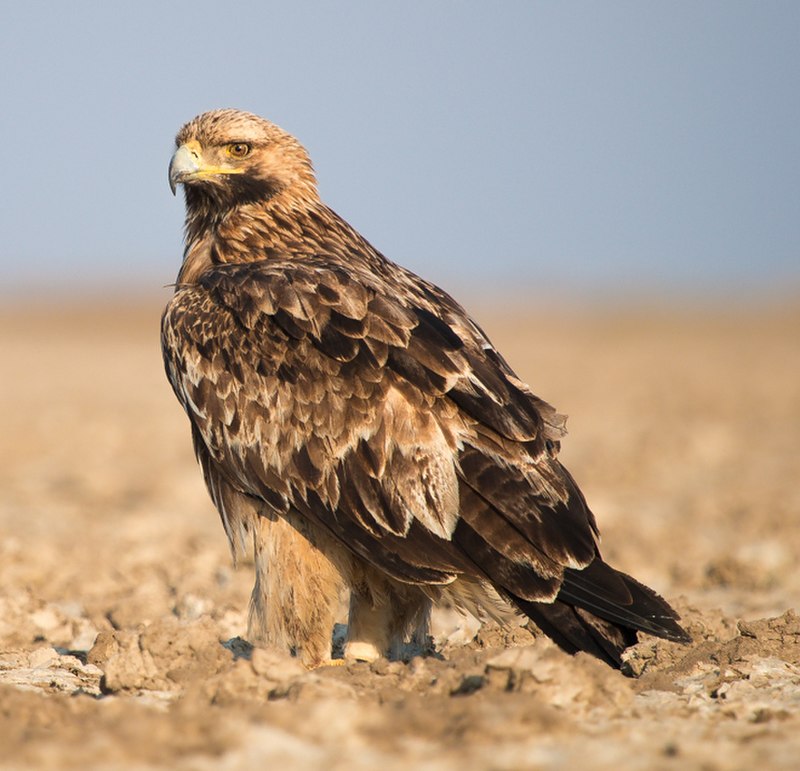
The Eastern Imperial Eagle is a majestic bird of prey, with striking features and sharp eyesight.
It breeds in southeastern Europe and throughout West and Central Asia, before migrating south to winter in Africa, the Middle East or South/East Asia.
This eagle belongs to the Accipitridae family – known for their well-feathered legs – allowing them great agility when hunting their prey which includes rabbits, hares and small mammals among other birds.
They have brown wings bordered by white feathers which gives it an elegant appearance that stands out from its environment.
In recent years there has been some concern about declining numbers due to loss of habitat or illegal poaching; however conservation efforts are underway to ensure this beautiful species continues into future generations.Scientific classification:
| Kingdom | Animalia |
| Phylum | Chordata |
| Class | Aves |
| Order | Accipitriformes |
| Family | Accipitridae |
| Genus | Aquila |
| Species | A. heliaca |
Also Featured In: Common Birds in Saudi Arabian, Imperial Birds You Should Know
27. Motacillidae
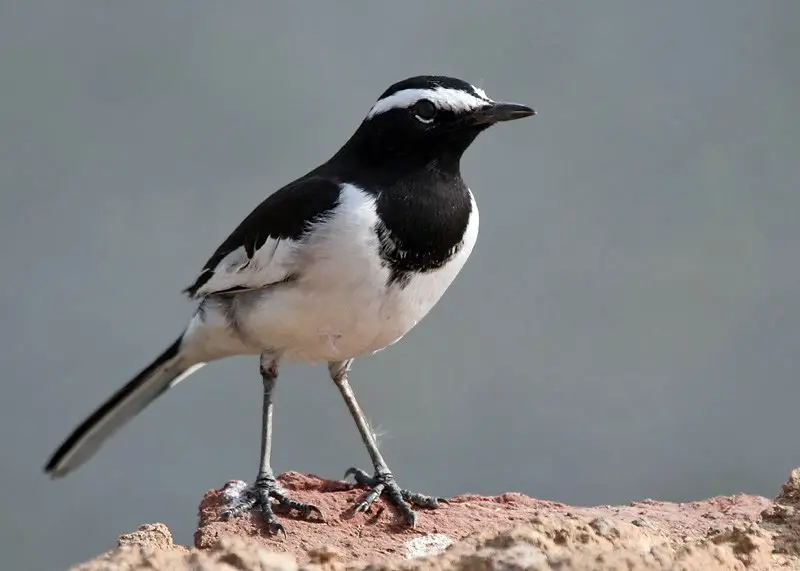
Motacillidae is a family of small passerine birds consisting of around 70 species. They are found across Europe, Africa, Asia and even Alaska with two migratory breeding species.
The three genera they belong to include wagtails which typically have medium to long tails; longclaws that can only be spotted in the Afrotropics; and pipits which possess the most cosmopolitan distribution worldwide.
These birds feed on insects as well as seeds for their diets and are usually seen in open habitats such grasslands or wetlands where food sources like invertebrates can easily be accessed.
Most Motacillidae species also use mud nests during breeding season making them easy targets for predators so it’s important we protect these beautiful creatures.Scientific classification:
| Kingdom | Animalia |
| Phylum | Chordata |
| Class | Aves |
| Order | Passeriformes |
| Superfamily | Passeroidea |
| Family | Motacillidae Horsfield, 1821 |
Also Featured In: Birds of Belgium, Common Northwest Territories Birds
28. Penduline Tits
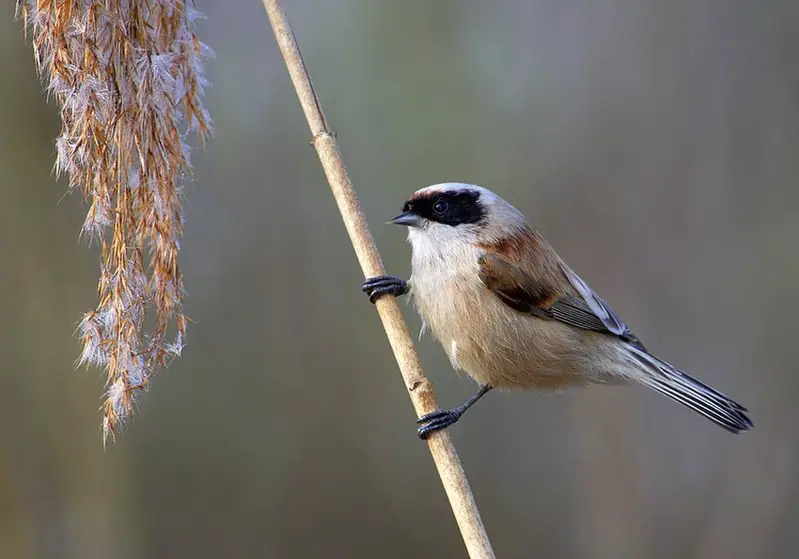
Penduline tits are small passerines with a length ranging from 7.5 to 11 cm, resembling true tits (Paridae). They have delicate bills with needle-like points and their wings appear short and rounded.
These birds build elaborate bag nests that hang from trees over water, giving them the name of “penduline” – meaning hanging. As for diet, they mainly feed on insects and spiders but may also consume some seeds too.
Depending on the species, penduline tits can be found in sub-Saharan Africa or across Eurasia into China and Central Asia as well as parts of North America such as California’s Sierra Nevada range halfway up Mexico’s western coast.Scientific classification:
| Kingdom | Animalia |
| Phylum | Chordata |
| Class | Aves |
| Order | Passeriformes |
| Infraorder | Passerida |
| Family | Remizidae Olphe-Galliard, 1891 |
Also Featured In: Birds of Czech Republic,
29. Locustellidae
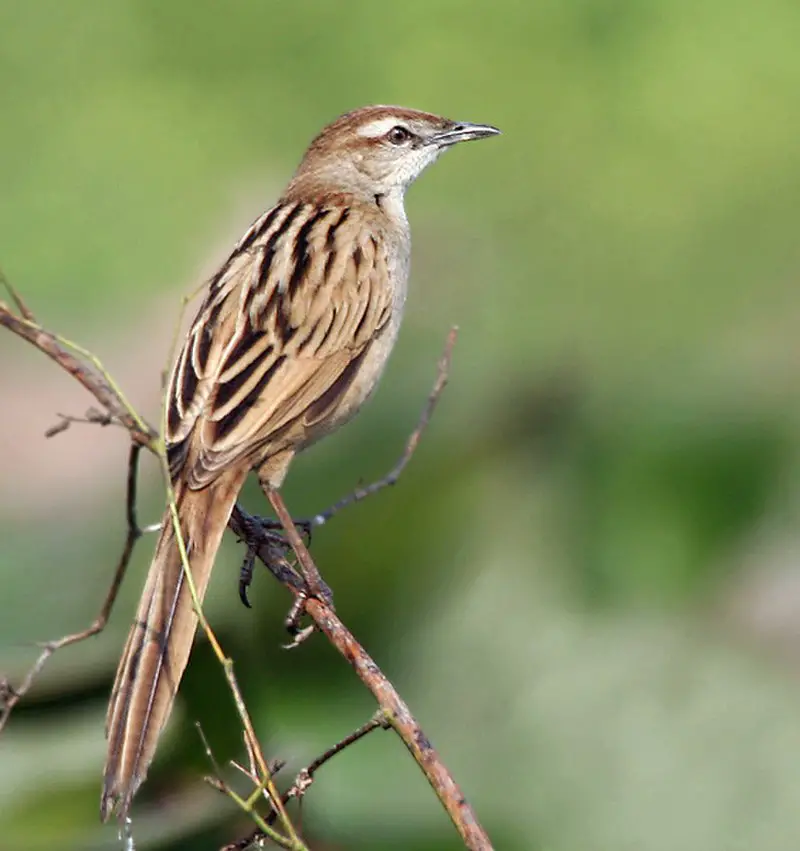
Locustellidae is a family of small insectivorous songbirds, commonly known as warblers. They are found mainly in Eurasia, Africa and the Australian region.
These birds typically have plain coloring on their wings and tail but with brightly colored patches on their face or neck.
Their diet consists mostly of insects and other invertebrates which they capture while foraging among grasses or bushes.
Locustellidae species also possess a distinctive vocalization that can be heard at dawn or dusk; it has been described as an intermittent trill lasting several seconds to minutes in length without any pauses between notes.
As active little birds, they make excellent additions to gardens providing hours of delight with their singing abilities.Scientific classification:
| Kingdom | Animalia |
| Phylum | Chordata |
| Class | Aves |
| Order | Passeriformes |
| Superfamily | Sylvioidea |
| Family | Locustellidae Bonaparte, 1854 |
30. Rock Partridge
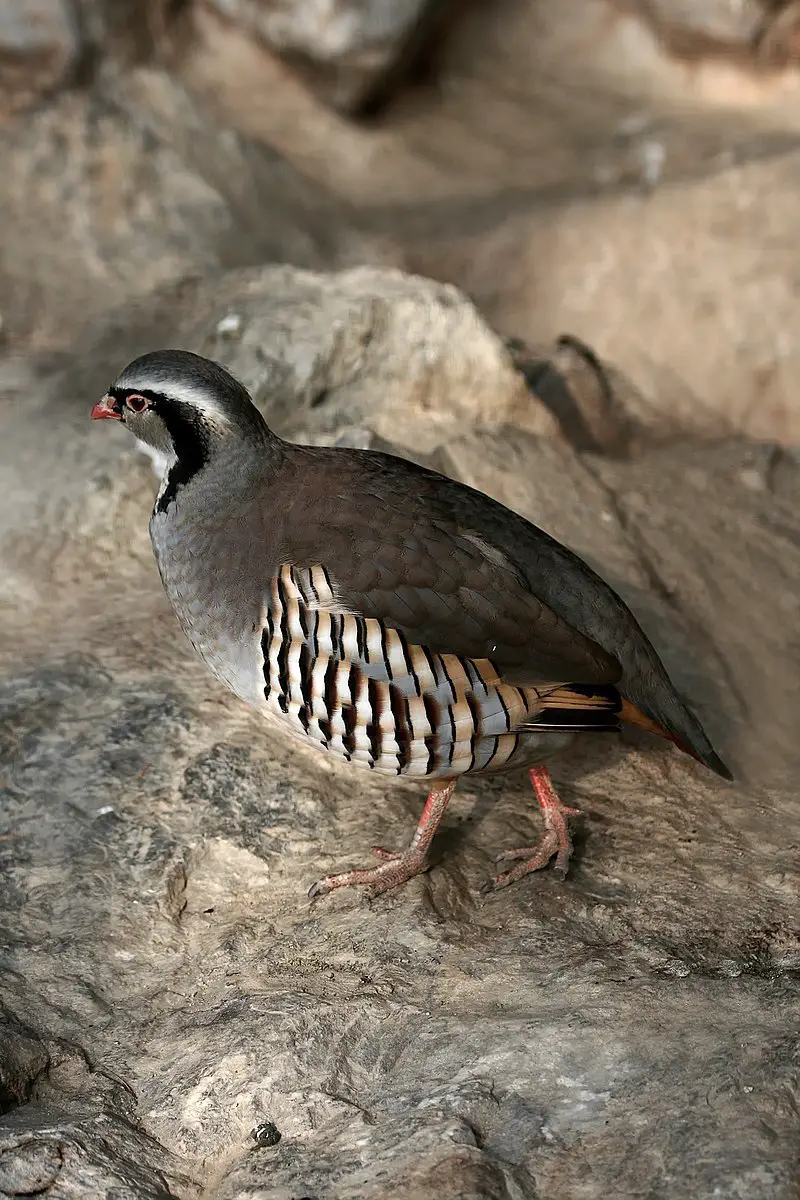
The Rock Partridge is a gamebird in the pheasant family and is native to southern Europe. It closely resembles its eastern counterpart, the Chukar Partridge.
This bird resides in dry and open hillsides, where it builds its nest on a shallow ground scrape that’s only lightly lined with material for insulation.
The rock partridge has long been an important species of prey among hunters due to its size as well as being relatively easy to find during hunting expeditions.
Although these birds are not endangered at present, their population numbers have declined significantly over recent years due to poaching and habitat destruction caused by human activities such as farming or urbanization projects.
Conservation efforts must be taken if we want this unique species of bird stay around us for future generations.Scientific classification:
| Kingdom | Animalia |
| Phylum | Chordata |
| Class | Aves |
| Order | Galliformes |
| Family | Phasianidae |
| Genus | Alectoris |
| Species | A. graeca |
Also Featured In: Most Beautiful birds of Greece, European Birds
31. Bonelli’s Eagle
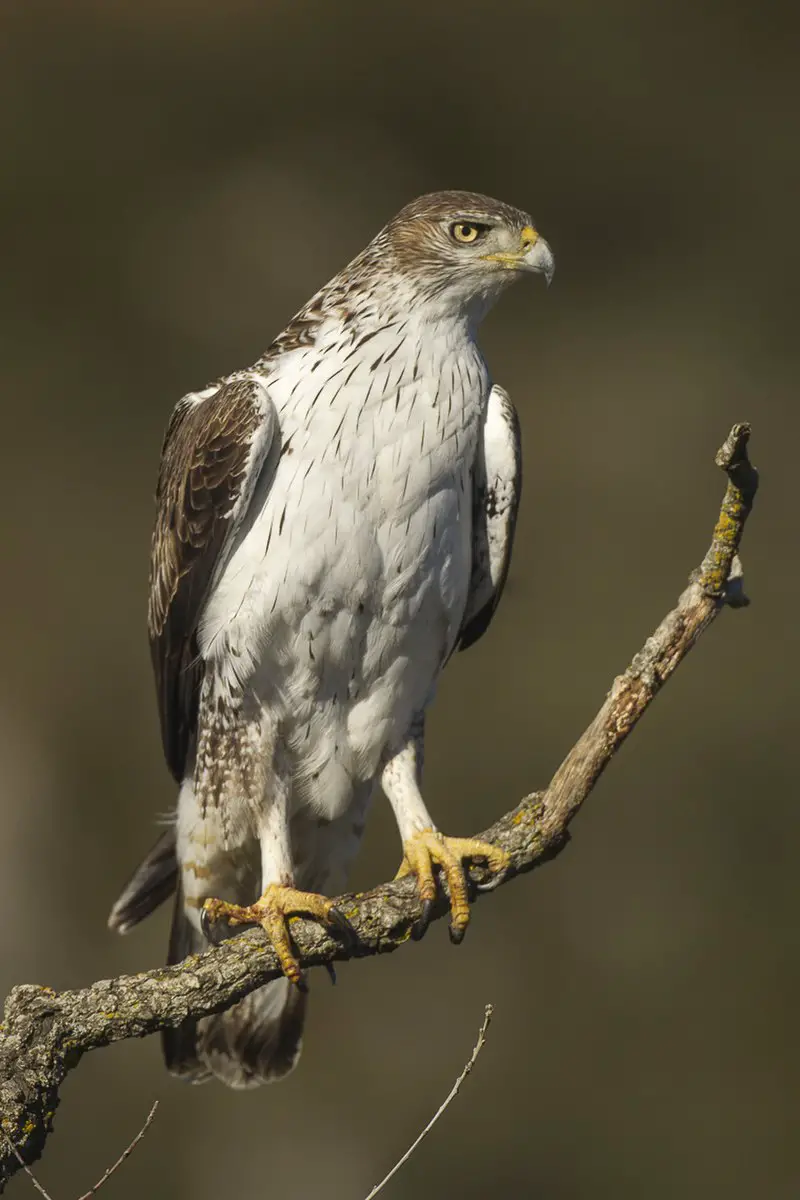
Bonelli’s eagle is a majestic bird of prey, named after the Italian ornithologist and collector Franco Andrea Bonelli. It can be found in parts of Europe, Africa and Asia where it inhabits wooded hillsides or open mountain ranges.
The species has an impressive wingspan that reaches up to 6 feet across. They use their sharp talons to catch small animals such as lizards and rabbits which they hunt from high above the ground.
With its distinctive crestless head, streaked chestnut feathers on its back and white underparts this stunning raptor makes for quite a sight when soaring through the sky.Scientific classification:
| Kingdom | Animalia |
| Phylum | Chordata |
| Class | Aves |
| Order | Accipitriformes |
| Family | Accipitridae |
| Genus | Aquila |
| Species | A. fasciata |
Also Featured In: Birds found in portugal, Common Birds of Portugal
32. Acrocephalidae
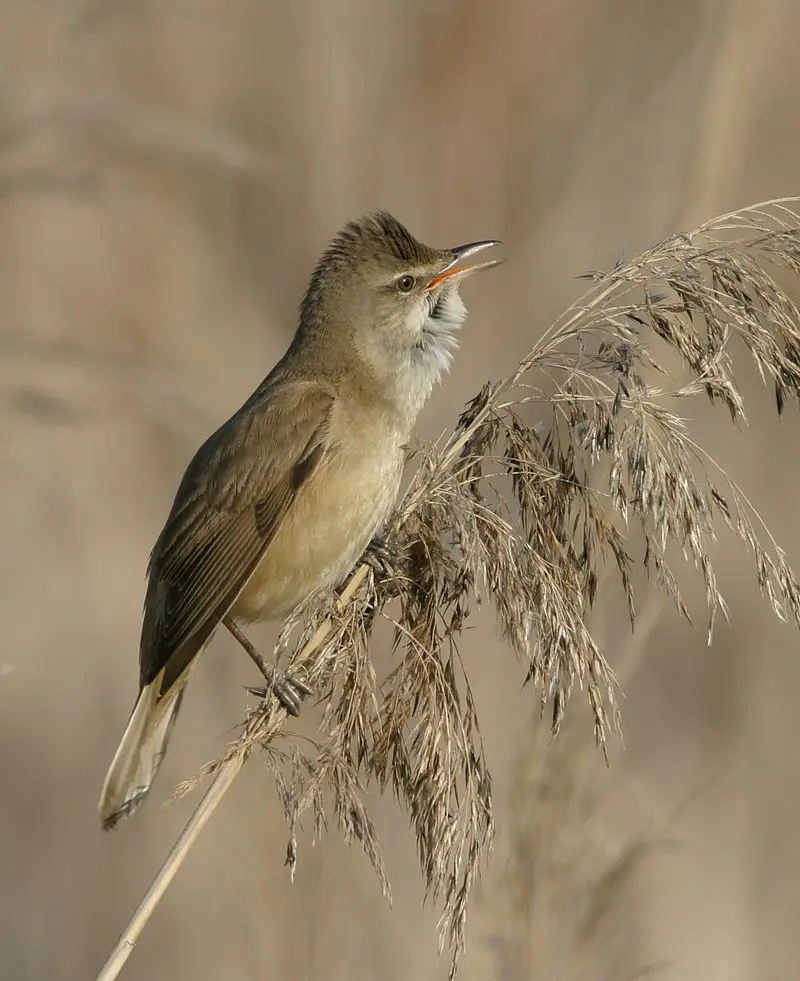
The Acrocephalidae, commonly known as reed warblers, marsh- and tree-warblers or acrocephalid warblers are a family of passerine birds belonging to the superfamily Sylvioidea.
These birds typically have an olivaceous brown top with yellowish to beige underside. They can mostly be spotted in open woodlands, reed beds or tall grasses.
This family comprises about 130 species spread across Eurasia and Africa which includes some vagrant species too.
Most of these bird families feed on insects like spiders, beetles etc., while others also consume small fruits such as berries.
They make nests close to ground level by weaving twigs together using their saliva for binding them making it waterproof enough so that eggs stay safe from rainwater during breeding season.Scientific classification:
| Kingdom | Animalia |
| Phylum | Chordata |
| Class | Aves |
| Order | Passeriformes |
| Superfamily | Sylvioidea |
| Family | Acrocephalidae Salvin, 1882 |
Also Featured In: Birds of United Arab Emirates,
33. Lesser Spotted Eagle
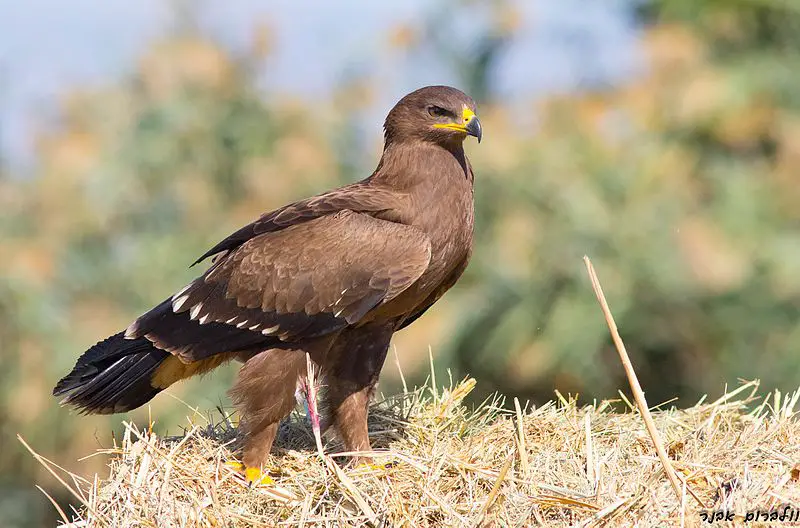
The Lesser Spotted Eagle is a large Eastern European bird of prey that belongs to the Accipitridae family. It has an overall slender body shape, with males averaging around 3kg in weight and females weighing up to 4kg.
Its wingspan can reach up to 180 cm, making it one of the largest birds of prey in Europe. It has a distinctive dark brown upper plumage, pale beige under parts and yellow legs which have black ‘tiger’ stripes running along them.
The head is covered with white feathers while its eyes are yellowish-brown or orangey-red coloured depending on age.
They feed mainly on small mammals such as voles but also takes other smaller animals like reptiles or amphibians if available nearby.
In recent years their population numbers have declined due to habitat loss caused by human activities thus conservation measures for this species must be taken into account so as not only preserve these majestic creatures but also protect our environment at the same timeScientific classification:
| Kingdom | Animalia |
| Phylum | Chordata |
| Class | Aves |
| Order | Accipitriformes |
| Family | Accipitridae |
| Genus | Clanga |
| Species | C. pomarina |
Also Featured In: Birds of Israel,
34. Cisticolidae
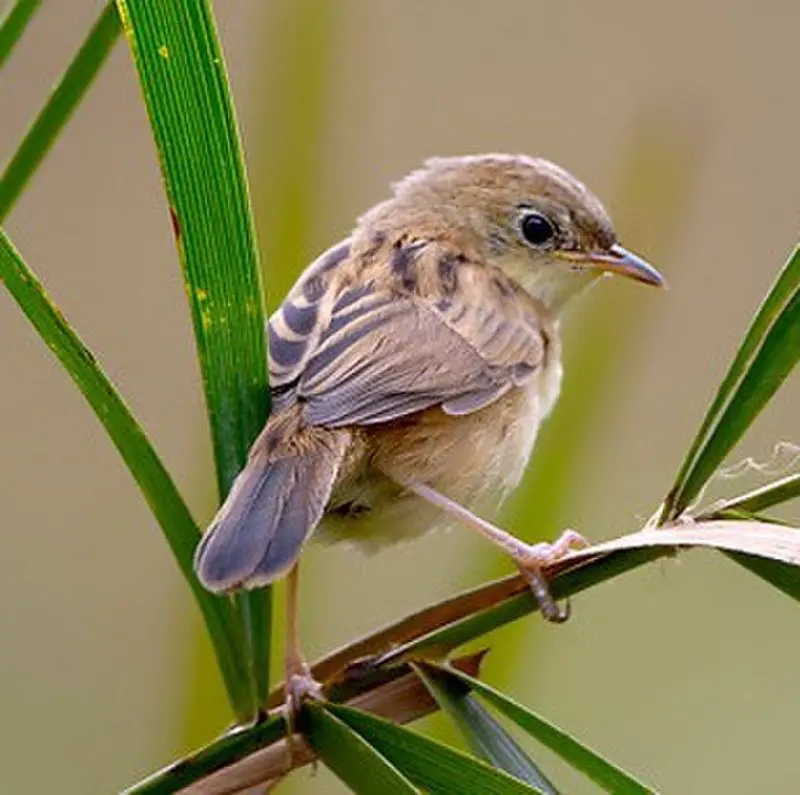
Cisticolidae is a family of warblers found mainly in warmer regions of the Old World. There are about 160 species all together, mostly seen across Africa but also in other parts like tropical Asia and Australasia.
One notable example from this family is the zitt bird which makes its home across these areas.
These small passerine birds have drab colors on their bodies with darker wings and tails for camouflage when they fly or perch among foliage.
They can be distinguished by their loud chirps that echo through forests and grasslands as well as distinctive songs used to attract mates during mating seasons.
Despite being quite common, Cisticolidae remain elusive due to their excellent ability to hide away within vegetation making them difficult to observe closely in nature.Scientific classification:
| Kingdom | Animalia |
| Phylum | Chordata |
| Class | Aves |
| Order | Passeriformes |
| Superfamily | Sylvioidea |
| Family | Cisticolidae Sundevall, 1872 |
Also Featured In: Lesotho birds, White Birds that You’ll Find in Cyprus
35. Sandpiper
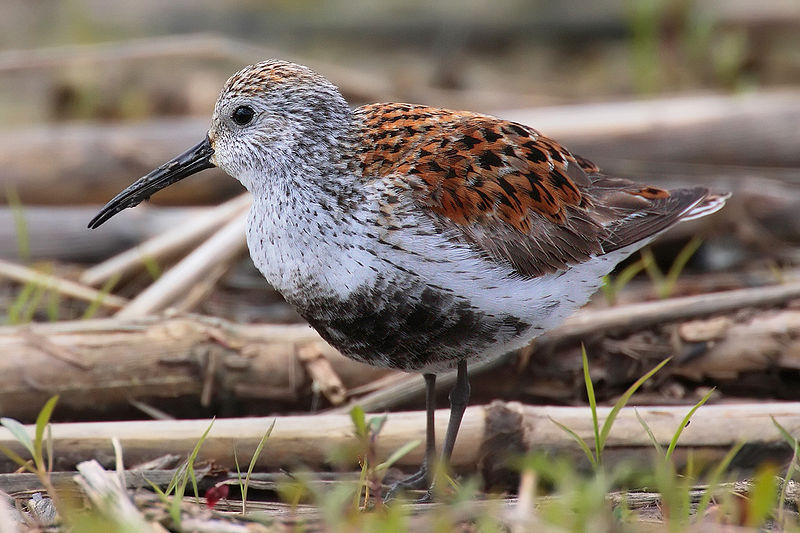
Sandpiper is a type of wading bird that belongs to the family Scolopacidae. It is a diverse family that includes various species such as curlew and snipe.
Sandpipers have different bill lengths that allow them to feed on small invertebrates and creatures found in mud or soil.
Due to this diversity, different species can coexist in the same habitat without competing for food.
Sandpipers are commonly found near the coast but are also found in other wetland environments.
They are known for their slender legs, long beak, and streamlined body that enables them to move easily in and out of water.
Sandpipers are a unique and fascinating bird species that are interesting to observe in their natural habitat.Scientific classification:
| Kingdom | Animalia |
| Phylum | Chordata |
| Class | Aves |
| Order | Charadriiformes |
| Suborder | Scolopaci |
| Family | Scolopacidae Rafinesque, 1815 |
Also Featured In: Birds You’ll Find in the Sea, Turkey Birds You Should Know
36. European Nightjar
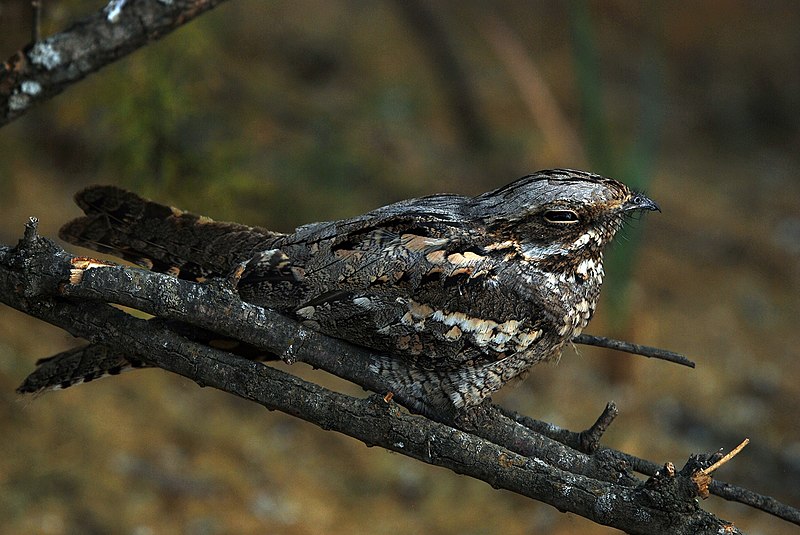
The European nightjar is a nocturnal bird that can be found in Europe, the Palearctic region, Mongolia, and Northwestern China.
It belongs to the nightjar family and is known by several names, including the common goatsucker and Eurasian nightjar.
There are six subspecies of this bird. The nightjar is crepuscular, meaning it is most active during dawn and dusk.
Its Latin generic name comes from an old myth that the bird suckled from goats, causing them to stop giving milk.
The European nightjar is well-adapted to its nocturnal lifestyle with large eyes and wide gape that help it catch flying insects in the dark.
Its plumage is cryptic, blending in with its surroundings, making it difficult to spot. The bird usually nests on the ground, and the male performs aerial displays during breeding season.Scientific classification:
| Kingdom | Animalia |
| Phylum | Chordata |
| Class | Aves |
| Clade | Strisores |
| Order | Caprimulgiformes |
| Family | Caprimulgidae |
| Genus | Caprimulgus |
| Species | C. europaeus |
Also Featured In: Italian Birds You Should Know, Ukrainian Birds You Should Know
37. Lesser Grey Shrike
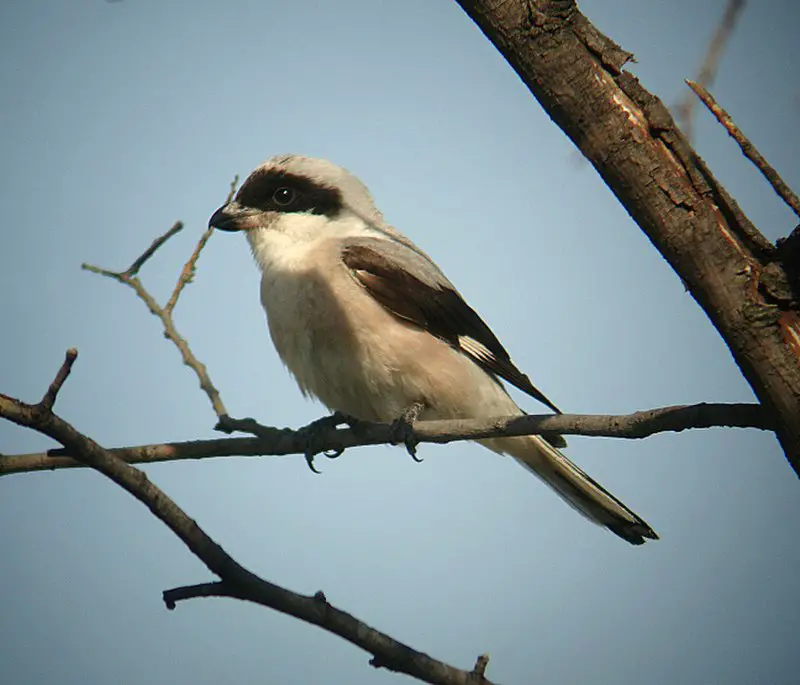
The lesser grey shrike is a migratory bird that breeds in parts of Europe and Asia. During the autumn, it travels to southern Africa for the winter season and returns in the spring.
It is a rare sight in western Europe, often seen as an erratic during the spring or autumn. This shrike is similar in appearance to the great grey shrike, another member of its family.Scientific classification:
| Kingdom | Animalia |
| Phylum | Chordata |
| Class | Aves |
| Order | Passeriformes |
| Family | Laniidae |
| Genus | Lanius |
| Species | L. minor |
Also Featured In: Birds Found in Hungary, Birds You’ll Find in Albania
38. Flamingos
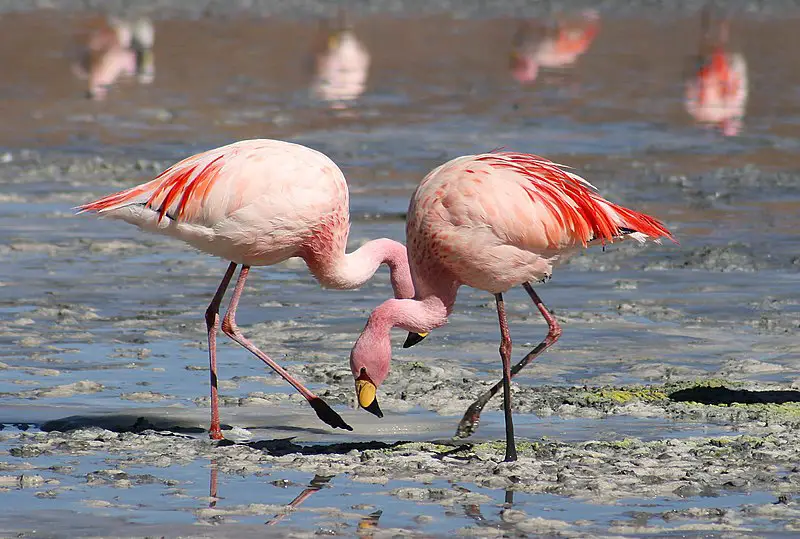
Flamingos are a type of water bird that belong to the Phoenicopteriformes group. They are known for their distinctive pink coloring and long, thin legs.
Flamingos are closely related to grebes and are part of the Mirandornithes clade. These birds are well-documented in the fossil record, with some of their extinct relatives dating back millions of years.
In fact, the first known member of the Phoenicopteridae family was a bird called Elornis. Flamingos are known for their unique feeding habits, which involve using their beaks to filter food from the water.
They are also social creatures that typically live in large groups called colonies.
Overall, flamingos are fascinating creatures with a long history on our planet.Scientific classification:
| Kingdom | Animalia |
| Phylum | Chordata |
| Class | Aves |
| Clade | Mirandornithes |
| Order | Phoenicopteriformes Fürbringer, 1888 |
Also Featured In: Common Algerian Birds , Most Common Romanian Birds
39. Waxwing Birds
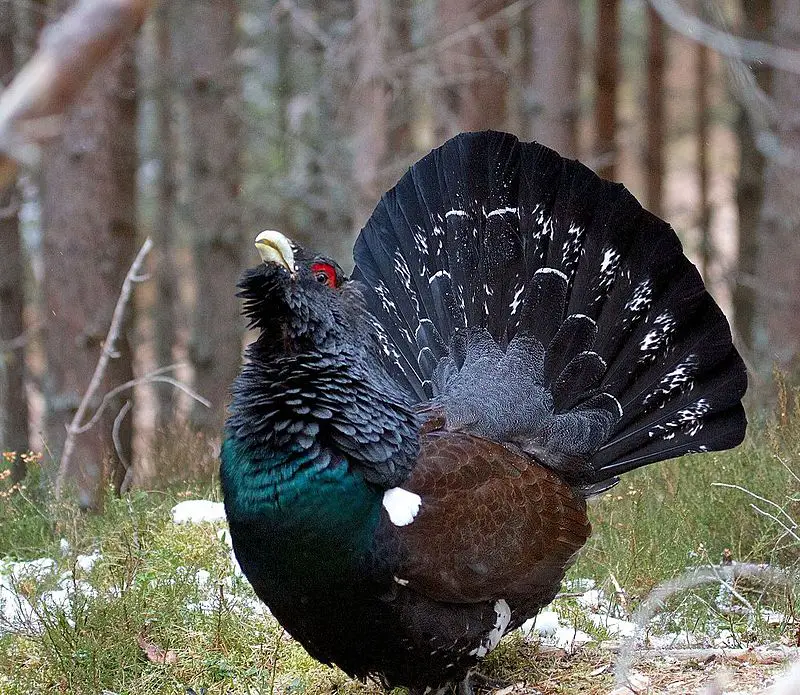
Waxwing birds are known for their striking and unique appearance, featuring a brownish-gray body with a bright yellow-tipped tail and a distinctive crest on their head.
They are primarily found in North America and Eurasia, often inhabiting forests and orchards. These birds are known to be migratory and can travel long distances during seasonal movements in search of food.
They feed mainly on fruits, but also consume insects during breeding season. Waxwings are social birds, often seen in large flocks and engaging in playful behavior such as passing berries back and forth between their bills.
They are also known for their intricate vocalizations, which they use to communicate with each other.
Despite their beauty, waxwings face threats including habitat loss and pesticide use in their foraging areas. However, conservation efforts have helped to stabilize populations of these unique birds.